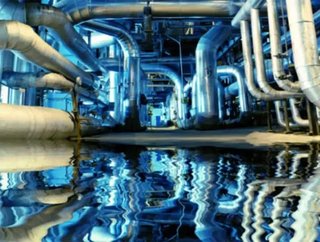Streamlining Inspection of Oil & Gas Well Sites & Facilities

Written By: Paul Schubert & David Scott
TO ENHANCE YOUR READING EXPERIENCE, CLICK HERE TO VIEW THIS ARTICLE IN OUR INTERACTIVE READER!
Oil and gas well sites and associated processing facilities present a unique set of inspection challenges. To address this, over 25,000 upstream oil and gas well sites and their associated processing facilities were inspected using API-510, -570, and -653 procedures and the systematic descriptive method developed. This methodology ensures consistent identification and communication of the type and priority of the deficiencies discovered, and establishes a time frame for their remediation.
The Problem
The inspections showed that there were a significant number of sites with deficiencies, the most urgent ones at well sites being Pressure Safety Valve/Pressure Relief Device issues and leaks. These required urgent responses to avoid catastrophic loss of containment. At newly completed well sites, “urgent priority” deficiencies were also discovered, due primarily to either faulty design, or failure to verify that seals were intact on all equipment after construction.
There are several drivers for inspection of any processing facility including regulatory, economic, health and safety considerations. Catastrophic failure of the pressure systems at oil and gas production facilities can lead to substantial damage to property and risk to employees. In many cases, the cost of inspecting the facilities is only a small fraction of the cost that would result if a failure occurred.
The protocols for conducting the critical systems inspections of well sites are well defined through standards and recommended practices such as API-510 (pressure vessels), API-570(pressure piping), API-653 (above ground storage tanks), API-520/521 (pressure safety valves). However, inspection of well sites and their associated small processing facilities represent unique challenges, because well sites are generally highly dispersed geographically, often have diverse provenance, and generally are not continuously attended. The geographic dispersion means that there are usually many different inspectors involved in inspection of these facilities. Changing ownership of the well sites often results in highly variable maintenance histories. The lack of attendance may cause problems to continue for some time without being discovered. The impact of these problems could be substantially mitigated if a systematic approach to managing the inspection data was applied.
The foundation of the systematic approach involves answering the question “What is the problem?” The traditional method depends on expert inspection personnel being able to answer that question with sufficient accuracy and detail to allow an effective remediation plan to be developed and executed according to the owner’s maintenance and engineering standards. One significant factor impacting this process is the tendency of each inspector to describe their observations uniquely. Because each inspector’s findings are unique, the recommendations for remediation must be custom generated by knowledgeable personnel. This is a relatively expensive and slow process. Furthermore, because each finding is essentially unique, it makes it difficult to establish, transmit, and enforce corporate engineering and maintenance standards for remediation.
SEE OTHER TOP STORIES IN THE WDM CONTENT NETWORK
Collaboration and Consensus Building for Arctic Offshore Oil and Gas
Beyond Solar Panels: Six Types of Solar Power Plants
The Remote Controlled Mine: Robotic and Virtual Mining Machinery and Equipment
The Solution
The essential first step in implementing a systematic approach is the development of a comprehensive list of mechanical integrity deficiencies which can be encountered during inspection. The inspectors in the field then select an observed condition from the list of predefined conditions. Thus “standard conditions” are established resulting in consistency among the inspectors, even in the case of them being in diverse geographic locations. Once the categories are established, it is fairly simple for experienced personnel to list the types of findings commonly found under those categories.
Recognizing that there are approximately 5% of conditions which are not readily classified allows the flexibility needed to have an effective system. Inspectors are free to adequately describe truly unique “other” conditions. If these become common occurrences, they are added to the list of “standard conditions.”
Using the systematic approach, it is possible to pre-determine the remediation priority for each standard condition, answering the question “How serious is the problem? Prioritization of the findings is derived from risk-based methodologies.
Having established standard conditions with predetermined remediation priorities, it is possible to answer the question “What’s the right action to take to remediate the problem?” By previously developing the next step to be taken when a high priority finding is made, the entire process for addressing such deficiencies is greatly accelerated.
Implementation of the systematic approach is essential in the process of managing the inspection data. Involvement of a third-party company ensures consistent identification and communication of the type and priority of the deficiencies discovered as well as accelerates the mitigation of the problems. With substantial experience and competence, SGS Industrial Services provides systematic approach to inspecting oil and gas production facilities, which ensures that installations, material, equipment, facilities and projects meet all quality and performance requirements.
Dr. Paul Schubert, SGS North America Inc.
David Scott, SGS North America Inc.






